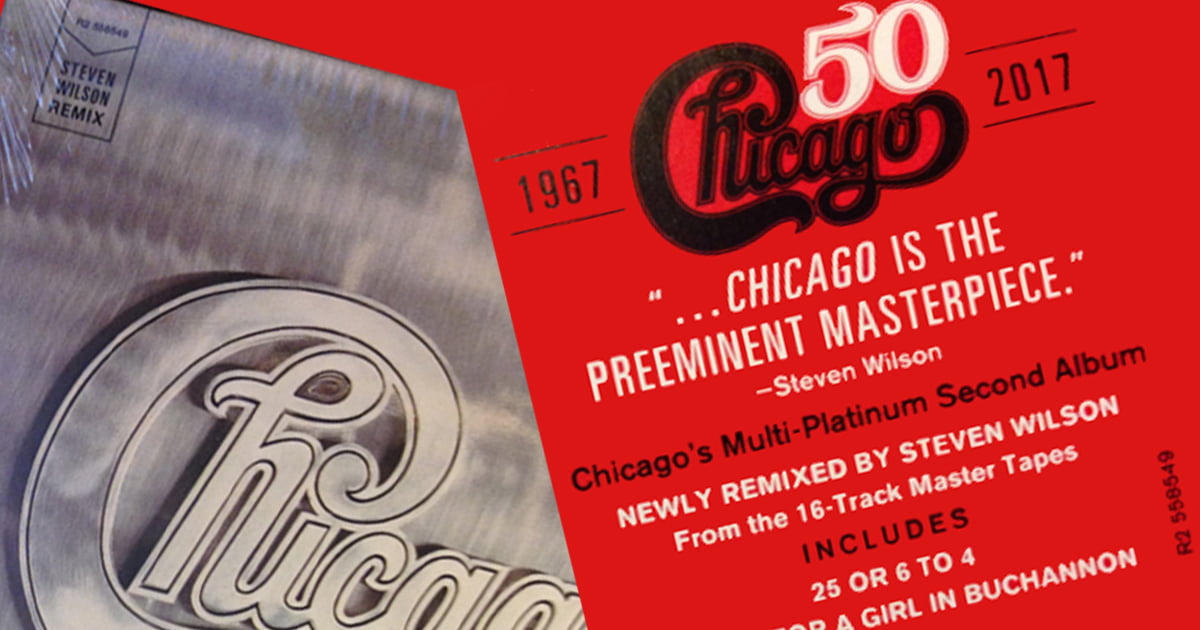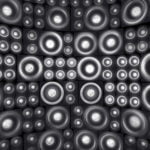It’s the time of year for saving money!
Is this trip really necessary?
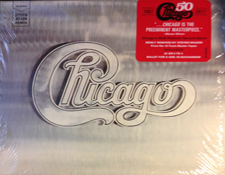 That’s the first thing I asked myself when I received a copy in the mail from the good folks at Rhino of the new Steven Wilson-remixed edition of Chicago’s landmark second album from 1970 — simply titled Chicago but eventually known to fans as Chicago II.
That’s the first thing I asked myself when I received a copy in the mail from the good folks at Rhino of the new Steven Wilson-remixed edition of Chicago’s landmark second album from 1970 — simply titled Chicago but eventually known to fans as Chicago II.
Now don’t get me wrong… I am a big fan of Mr. Wilson’s productions and I’m thrilled that the powers that be found it in their heart-of-hearts to bring this landmark album to him to see what kind of magic he could perform on these legendary tapes. He reportedly was given access to the original 16 track multi track master recordings to do a completely new remix of the album — as far as I know, the last time that was done was in 2002 or thereabouts for the 2003 reissue in 5.1 surround sound and stereo on the DVD Audio Disc format.
I am also a big fan of the original Terry Kath-era of Chicago, the version of the band playing on this album. In fact, the first rock concert I ever saw was Chicago (with The Beach Boys, at Madison Square Garden in 1975 or thereabouts).
So, before going back to my original question as to why this reissue might really be necessary, it might be smart for us to stop and consider a few things for a moment.
You see, numerous fans and audiophiles have complained over the years about the album having a somewhat mushy sound to it. And at least one audiophile I’ve known for a very long time — a relative who, along with my brothers, more or less introduced me to the album back when I was a little kid — rather huffily dismissed the record in more recent times, complaining that he thought it was, in retrospect, a very sloppy album.
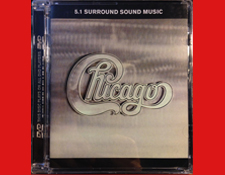 Now when I’ve gone back and listened to Chicago II, the last thing I hear is a sloppy band. I hear a tight rock band firing with all cylinders on. I also hear a hot jazz group swinging like gone cats from another era. I hear a fine pop band delivering well crafted tunes. That hybrid is one of Chicago’s distinctive points. But I’m not hearing anything that is sloppy here, so that comment continued to gnaw at me, making me wonder what in fact might have made him turn on this iconic recording once he became a serious audiophile, a recording he once loved.
Now when I’ve gone back and listened to Chicago II, the last thing I hear is a sloppy band. I hear a tight rock band firing with all cylinders on. I also hear a hot jazz group swinging like gone cats from another era. I hear a fine pop band delivering well crafted tunes. That hybrid is one of Chicago’s distinctive points. But I’m not hearing anything that is sloppy here, so that comment continued to gnaw at me, making me wonder what in fact might have made him turn on this iconic recording once he became a serious audiophile, a recording he once loved.
That said…
In preparing this review-of-a-sort, I went back and spot checked the several stereo versions of Chicago II which I own — exclusively on digital media so we could compare as closely as possible apples to apples. And besides… I already got rid of my original vinyl pressing a while ago!
These digital versions include the 2003 DVD Audio Disc version that had been mixed by John Kellogg and the new Blu-ray Disc “Quadio” version (which as far as I know is the original James William Guercio mix). I listened to just the stereo two-channel mixes there. Note that I previously reviewed the quadrophonic mixes here on Audiophilereview which you can read by clicking here.
Both versions have their merits, but if there is one overriding factor linking the two versions, that is a certain softness to all the instruments which may have something to do with how they were actually recorded as opposed to how the final album as mixed. It also might have to do with certain types of processors that might have been used back in the day.
Compression… EQ… Reverb… every element added into the sonic “food chain” (if you will) impacts the ultimate sound you hear coming out of your home stereo system.
In contrast, spinning Mr. Wilson’s new mix via the new CD, one thing I noticed immediately is that you can get a better sense of the group playing as a band on this version. Pete Cetera’s melodic bass lines are more defined as are Danny Seraphine’s drums, particularly the tom toms and kick drum. Everything locks in a wee bit tighter on this mix.
The differences are subtle but significant.
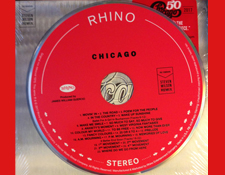 Going back and forth between my computer playing the CD (through my office amp, a Denon AVR-3802 for those who care about that sort of thing) and the Rhino Quadio Blu-ray Disc version (playing in DTS-HD Master Stereo mode through a simple, older and nothing fancy Sony Blu-ray player), vocal harmonies are much more apparent in this mix. For example, on “Wake Up Sunshine” the “ahhhh ohhhhs” in the background come in more like at the level of The Beatles’ harmonies on the Abbey Road track “Because.”
Going back and forth between my computer playing the CD (through my office amp, a Denon AVR-3802 for those who care about that sort of thing) and the Rhino Quadio Blu-ray Disc version (playing in DTS-HD Master Stereo mode through a simple, older and nothing fancy Sony Blu-ray player), vocal harmonies are much more apparent in this mix. For example, on “Wake Up Sunshine” the “ahhhh ohhhhs” in the background come in more like at the level of The Beatles’ harmonies on the Abbey Road track “Because.”
Having the vocals up a bit more has its advantages, no doubt, for mobile listening — so you can hear more of the music without having to turn up the volume too loud in your headphones or in the car.
On “So Much To Say, So Much To Give,” there is a bit less reverb on the snare drum and the vocals are bigger. That Beatle analogy is again apropos because — here on (what would have been) Side Two of the LP — the songs flow in a suite very much like the flow on Side Two of Abbey Road. Actually, at times I’m hearing shades of Frank Zappa here — “West Virginia Fantasies” plays like a pumped up outtake from Uncle Meat or Burnt Weeny Sandwich.
But I digress…
The horns pop a bit more distinctly here.
]]>When you get to “Colour My World,” you can really get a sense of the different sonic palates (if you will) between Mr. Wilson and Mr. Guercio’s production approaches. There is a boxy flavor to the Guercio mix while the Wilson mix sounds a bit more air-y, especially around the cymbals during the flute solo. The organ part is much more distinct on Wilson’s mix.
Oh, yeah… there is almost no hiss on this new version of Chicago II. Noise reduction technology certainly has improved from where it was back in the day.
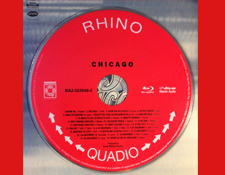 Yet as different as it sounds, it does still sound like the band Chicago and it does still sounds like the album Chicago II. No matter what you do you really can’t change the original recording – – that is what it is as captured on 16-channel multi-track analog tape back in the day.
Yet as different as it sounds, it does still sound like the band Chicago and it does still sounds like the album Chicago II. No matter what you do you really can’t change the original recording – – that is what it is as captured on 16-channel multi-track analog tape back in the day.
But with the latest and greatest in modern processing, Mr. Wilson seems to have been able to pull out a cleaner presentation of the music. It’s not so much that it sparkles – – the original recording no doubt had a certain shine to it – – but there’s more definition to the instruments individually and overall it seems like a more balanced presentation of the music and of the band as a whole, if that makes some sense.
Of course, I am listening to this on a CD which has its own inherent limitations, I recognize that. Still, all things considered it sounds quite good and one can guess that the high resolution version probably sounds pretty great too (more on that in a moment)
And, of course this begs a number of questions for you, Dear Readers-who-are-fans-of-Chicago:
Firstly, do you really need yet another edition of Chicago II if you already have it on Blu-ray Disc and DVD Audio and LP already? I mean, those Quad mixes are a lot of fun and even the DVD A version has its charms (which I outlined in my review of the Quadio box set last year).
Well I guess the answer lies in just how important this album is to you, Dear Reader. If you, like me, possess several of the earlier versions, chances are you’re a pretty hard-core Chicago fan so you’ll probably want to hear the new version regardless.
If you are a casual listener just looking for a new upgrade on your old CD or LP, the new Steven Wilson-remixed CD will probably be a good option for you.
I’m happy to have the CD for playing in the car and other mobile applications (‘cuz ya can’t really do that with a Blu-ray Disc at present)
Happily, there is a 96 kHz, 24-bit download available up on HDTracks so for some of you, that will probably be the version to get.
Of course this also begs the questions: will those of us who like physical media get a Blu-ray Audio version of this soon?
And, is Mr. Wilson working on a new surround sound mix of Chicago II to include on said physical media?
And — most important to me — is he working on Chicago VII!
We will have to wait-and-see.
